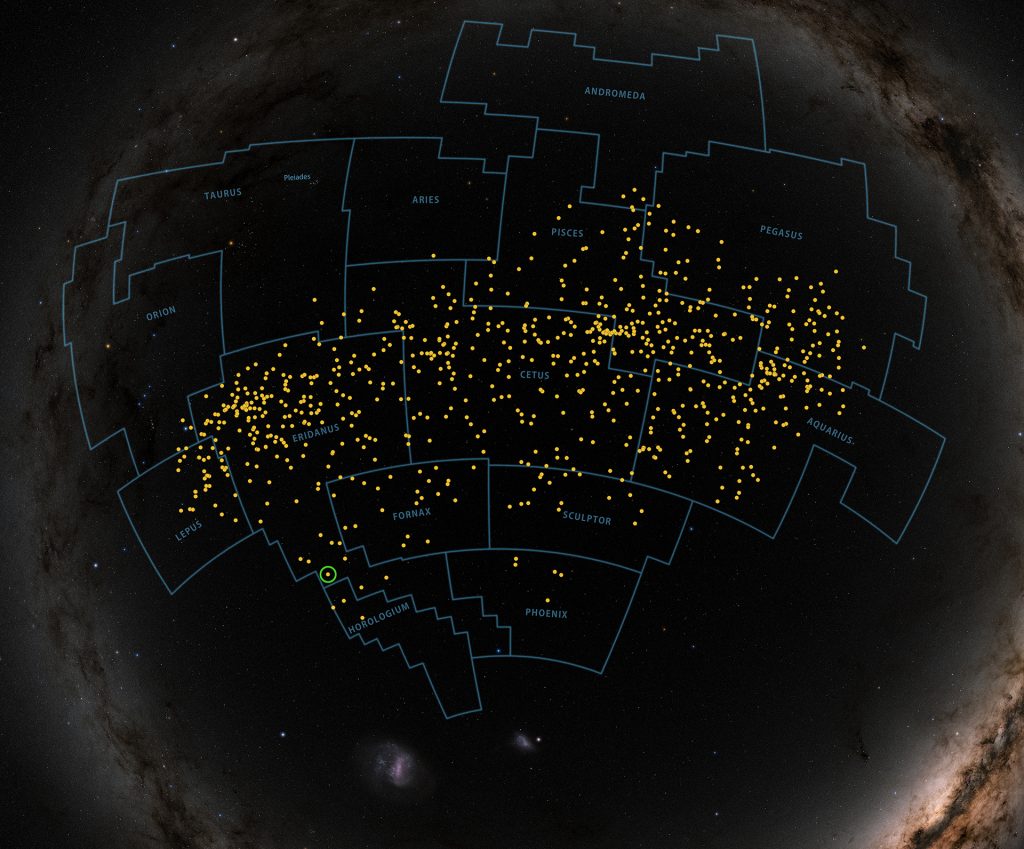
Our last story has two basic parts. One part is the discovery of a trio of exoplanets orbiting a relatively young star called TOI 451. The other part is that the star system resides in a stellar stream, which is pretty neat if you ask me.
Let’s quickly talk about that stellar stream. These streams happen when galaxies collide with other galaxies or with star clusters, and the smaller object gets pulled apart by the gravity of the larger object. The process is sort of like how meteor showers happen, but instead of debris from a comet, you have debris from a galaxy stretching out in the original orbit. This particular stream is called the Pisces-Eridanus stream due to its location in the sky, although it stretches across 14 different constellations. The stream is likely from when the Milky Way collided with a star cluster or dwarf galaxy and is about 1300 light-years long.
Discovered in 2019, the Pisces-Eridanus stream was found in Gaia data, and then TESS data was further analyzed to find the age of the stars in the stream. These stars are about 120 million years old, similar to the Pleiades cluster of stars. This also makes them eight times younger than the previous estimate, and a fantastic observational laboratory for studying planetary formation and evolution.

On to that system that was discovered around TOI 451. The star is about 400 light-years away, has about 90% of our own Sun’s mass, is 12% smaller, a little cooler, and gives off about 35% less energy. It rotates every 5.1 days, though, and that makes the rotational speed five times faster than the Sun. In the system itself are three hot worlds. TOI 451b is closest to the star, about twice the size of Earth, and orbits in less than two days. TOI 451c is next closest, three times the size of Earth with an orbit of 9.2 days. And TOI 451d is four times the size of Earth with a 16-day orbit.
Since the system is relatively young and relatively close, astronomically speaking, scientists are excited to study the planets and find out if they advance or clarify our understanding of how and when planets form and how their atmospheres evolve. The paper on this discovery was published in The Astronomical Journal.
More Information
NASA press release
“TESS Hunt for Young and Maturing Exoplanets (THYME). IV. Three Small Planets Orbiting a 120 Myr Old Star in the Pisces–Eridanus Stream,” Elisabeth R. Newton et al., 2021 January 14, The Astronomical Journal




 Join the Crew!
Join the Crew!
 Escape Velocity Space News
Escape Velocity Space News
0 Comments